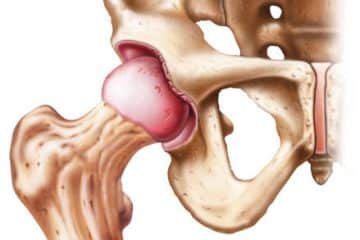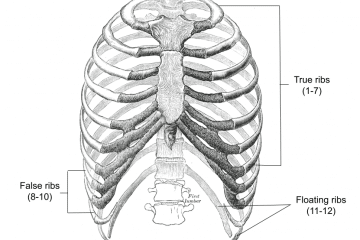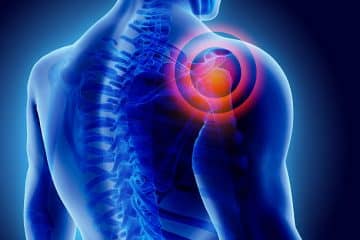Exercises for Hip Bursitis – Introduction
Pain in the hip can be caused by a common condition called hip bursitis. This illness causes pain, decreases strength, and limits the range of movement for activities like running or climbing. Hip bursitis can be recurrent, especially if activities that put stress on the hip bursa are continued.
While rest, medication, and passive physical therapy help in recovery, incorporating exercises into the treatment plan is the most effective way to alleviate the symptoms, strengthen the muscles, and promote healing.
In this article, we will cover the causes of hip bursitis, explore some practical exercises and other therapy used to treat this ailment, and provide tips on preventing a recurrence.
What is Hip Bursitis?
The meaning of the word bursitis is an inflammation of the fluid-filled bursa sac that covers the joints and connective tissue on the body. Hip bursitis is the inflammation of the sac in the hip.
A bursa sac is small and gel-like, acting as a shock-absorbent pillow. The American Academy of Orthopedic Surgeons talks about two of the most common hip bursae that can become injured or inflamed. The first one is trochanteric bursitis, which covers the greater trochanter, which sits at the bony point of the hip bone. The second one is the iliopsoas bursa located near the groin inside the hip. Both of these are treated in similar ways.
The most frequent symptoms of hip bursitis are:
- Acute sharp hip pain that becomes aching over time
- Hip tenderness
- Pain that gets worse with prolonged activity
- Leg pain that goes from the hip down to the side or back of the leg
- Pain when climbing, running, or cycling
- Pain when lying on one side
- Warmth feeling on the outer part of the hip
What Causes Hip Bursitis?
There are many things that can cause hip bursitis, like the following:
- Injury: a trauma or fall can cause hip bursitis.
- Repetitive motion: Overuse and repetitive strain like cycling, running, or a lot of squats can cause a bursitis flare.
- Leg-length inequality: A lot of people have a slight difference in length between one leg and the other, which can affect the gait, causing the same issue as the repetitive motion.
- Arthritis: The same inflammation of arthritis can extend to the bursa
- Spine diseases: Spine conditions like scoliosis can cause a problem in the movement pattern of the hips.
- Prior surgery: Hip surgeries like hip replacement can also create inflammation and change movement patterns.
- Lack of physical exercise: The abductor muscles can become weak and put pressure on the bursa of the hip, causing inflammation.
Exercises for Hip Bursitis
Stretching Exercises
These exercises should be performed within a free pain range. It should be performed for 15-30 seconds 3 times each.
- Gluteal stretch: Lie on your back with both legs bent. Rest the ankle of the injured side on top of the knee of the opposite leg. Grab the thigh of the leg on the uninjured side and pull toward the chest. You should feel a stretch on the buttock and along the outside of the injured side.
- Iliotibial band stretch standing: Standing up, cross your uninjured leg in front of the other leg at the ankle and extend the arm of the injured side overhead toward the uninjured side. Do not bend the knees and stand near a wall for stability if necessary.
- Iliotibial band stretch side leaning: Standing sideways close to a wall, put the foot of the injured side near the wall and flat on the floor with a hand on it for support. Cross the leg from the uninjured side over the other leg at the ankle. Lean the hip into the wall.
Strengthening Exercises
Strengthening exercises help stabilize the hip joint and support its structures. It is important to start with low resistance and increase it gradually.
Straight leg raise
- Lie on your back.
- Bend the knee on your uninjured side and place the foot flat on the floor.
- Lift the injured leg straight up with your thigh muscle tight.
- Do 2 sets of 15 repetitions.
Prone hip extension
- Lie on your stomach with your arms folded under your head to rest your head in them.
- Tighten your abdominal, buttocks, and thigh muscles.
- Lift the injured leg straight up off the floor with the leg straight.
- Lower the leg and relax.
- Do 2 sets of 15 repetitions.
Hip bridges
- Lie on your back with your knees bent and feet flat on the floor.
- Tighten your abdominal, buttocks, and thigh muscles, and lift the hips off the ground until your body forms a straight line from knees to shoulders.
- Do 2 sets of 10-15 repetitions.
Wall squat with a ball
- Stand straight against a wall looking straight ahead.
- Keep the feet 2 feet (90 cm) from the wall and the shoulder’s width apart.
- Place a ball the size of a basketball behind your back.
Keeping the back straight, slowly squat down to a 45-degree angle. Hold the position for 10 seconds and slide back up. Do 2 sets of 15 repetitions.
Clam exercise
- Lie on the uninjured side with the hips and knees bent and feet together.
- Raise the top leg toward the ceiling while keeping the heels touching each other.
- Hold for 2 seconds and lower.
- Do 2 sets of 15 repetitions.
Side plank
- Lie on your side.
- Prop yourself and the hips up onto your forearm with the elbow under the shoulder and the outside of your foot.
- Hold this position for 15 seconds.
- Switch sides and repeat. This exercise can be made easier by starting by resting on your forearm and your knees flexing toward your chest.
Plank
- Lie on your stomach, resting on your forearms.
- Lift yourself off the floor with the hips in line with the shoulders, supporting yourself on the forearms and toes.
- Hold for 15 seconds.
To make it easier, you can place the knees on the floor. Repeat 3 times.
Side-lying leg lift
- Lie on the uninjured side and lift the injured leg straight away from the other leg.
- Remember to tighten the muscles from the injured side.
- Do 2 sets of 15 repetitions.
Low-impact aerobic exercises
These exercises should be low-impact and non-weight bearing.
- Swimming: Swimming or water aerobics provide minimal impact on the joint and promote overall fitness without exacerbating hip bursitis.
- Cycling: This is an option to strengthen hip and leg muscles without stress on the hip joint.
Other Therapy for Hip Bursitis
Physical therapy treatment for hip bursitis uses strategies to reduce inflammation and pressure of the hip bursa. Many of these treatments are passive and help improve range of motion and strength, but the most effective ones are the exercises described above.
- Physical therapy: These include heat, ice, electric stimulation, massages, manual stretching, and ultrasound.
- Pharmaceutical: Oral nonsteroidal anti-inflammatories help to manage some of the symptoms providing pain relief.
- Corticosteroid injections: Localized injections coupled with local anesthesia provide fast pain relief and directly target inflammation.
- Platelet-rich plasma injections (PRP): It is not considered the standard of care for hip bursitis at this time.
- Extracorporeal shock wave therapy: This is an effective treatment, with a success rate of 86.8% combined with an exercise regimen.
- Surgical management: Rarely done. Reserved for chronic cases where the bursa is opened and cleaned.
How to Prevent Hip Bursitis?
There are different steps one can take to prevent hip bursitis
- Hip stretching every day.
- Performing hip strengthening exercises 3-5 times a week.
- Staying active.
- Maintaining low back and spinal mobility.
- Have a rest day not to overwork the joint.
Frequently asked questions about hip bursitis.
Can hip bursitis cause back pain?
Yes, the cause of hip muscle stress can translate to the back. Usually produced by the weakness of the medium gluteal muscle that results in bad stability and range of motion, making the back muscle supersede, causing fatigue and pain.
What’s the difference between hip bursitis and tendonitis?
Although the symptoms are very similar, the main difference is the pain. In contrast, bursitis has a more hot feeling and usually looks swollen and more painful to touch, affecting one specific area. Tendonitis pain can migrate to other places and increase in intensity over time.
What’s the difference between hip bursitis and arthritis?
The main difference between hip bursitis and arthritis is that the first one worsens with activity, while hip arthritis usually starts with more stiffness and pain and gets better after 30 minutes when the body has warmed up.
Can hip bursitis cause IT band pain?
Yes, because the IT band is involved in the stability of the pelvis and movement, having to compensate for the weakness of the gluteal muscles and therefore causing pain in the IT band.
Can hip bursitis cause sciatica pain?
No, hip bursitis can not cause sciatica pain. However, it is usually a mistaken diagnosis because of the place of the pain and the similarity of symptoms. You should consult your physician to get a clinical assessment to differentiate one from another.
Conclusions
Hip bursitis is a painful condition that limits the person’s mobility and strength in the hip joint because of trauma, overworking of the joint, or being a symptom of a preexisting disease. While rest, massage, pain medication, and other passive therapy can help in recovery, adding specific exercises into the treatment plan can help exponentially alleviate the symptoms and promote healing.
These specific exercises include stretching to improve flexibility and range of motion, strengthening to stabilize the joint, and low-impact aerobics to promote overall fitness without exacerbating hip bursitis.
Preventing hip bursitis involves daily stretching and regular strengthening while staying active and taking rest days to recover. With the proper treatment, the person can regain their quality of life and resume physical activities without pain.
See Also
Types of Hip Fractures and Diagnosis
Hemiarthroplasty vs Total Hip Replacement
Sources:
- Shsurgery.co.uk. Trochanteric Bursitis exercise. pdf [Internet]. shsurgery. Available from: https://www.shsurgery.co.uk/website/M82060/files/Trochanteric%20Bursitis%20exercise.pdf
- Brett Sears. Physical Therapy for Hip Bursitis: Exercises to know [Internet]. VeryWellHealth; May 17 2023. Available from: https://www.verywellhealth.com/physical-therapy-exercises-for-hip-bursitis-5199259
- Healthwise Staff. Hip Bursitis: Exercises [Internet]. MyHealth. Alberta.ca; 2022. Available from: https://myhealth.alberta.ca/Health/aftercareinformation/pages/conditions.aspx?hwid=bo1543
- Seidman AJ, Taqi M, Varacallo M. Trochanteric Bursitis. 2022 Nov 20. In: StatPearls [Internet]. Treasure Island (FL): StatPearls Publishing; 2023 Jan–. PMID: 30860738. Trochanteric Bursitis – StatPearls – NCBI Bookshelf (nih.gov)
- Chris Freytag. 9 best exercises for Hip Bursitis (Video Included) [Internet]. Get Healthy; 2022. Available from: https://gethealthyu.com/best-exercises-hip-bursitis/
- Ramon S, Russo S, Santoboni F, Lucenteforte G, Di Luise C, de Unzurrunzaga R, Vetrano M, Albano M, Baldini R, Cugat R, Stella G, Balato G, Seijas R, Nusca SM, Servodidio V, Vulpiani MC. Focused Shockwave Treatment for Greater Trochanteric Pain Syndrome: A Multicenter, Randomized, Controlled Clinical Trial. J Bone Joint Surg Am. 2020 Aug 05;102(15):1305-1311.


